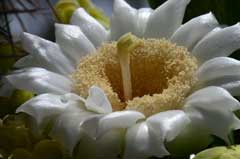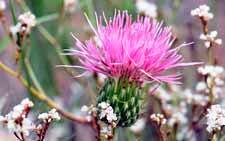Nolina microcarpa, Beargrass
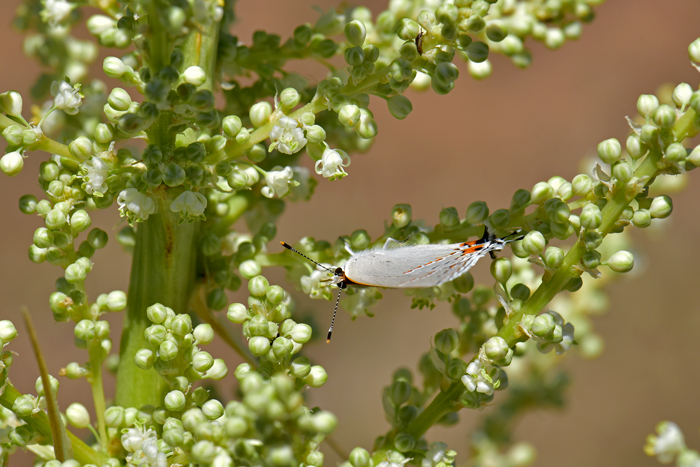
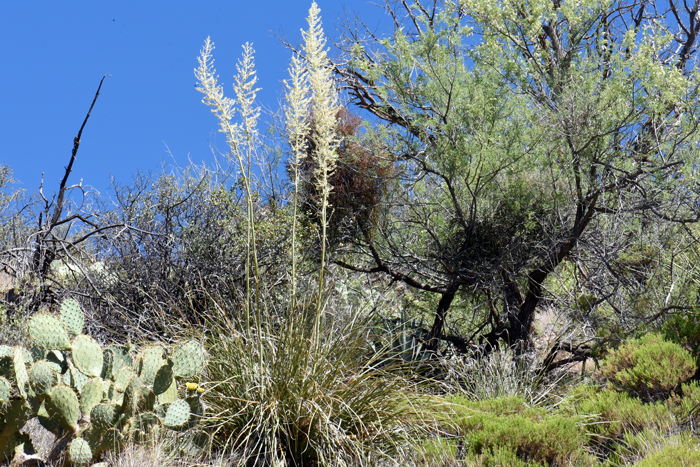
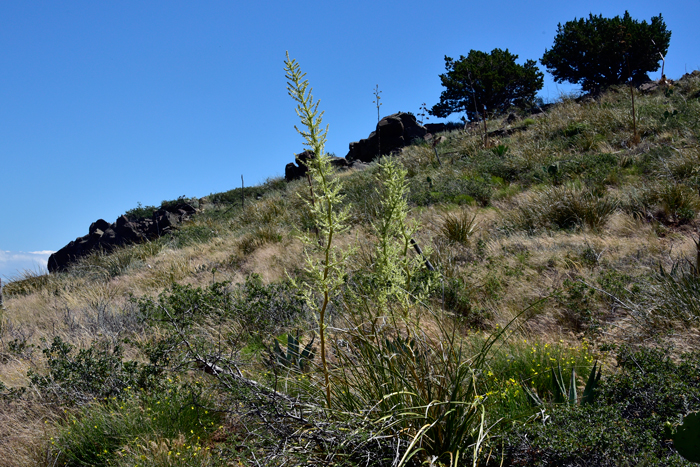
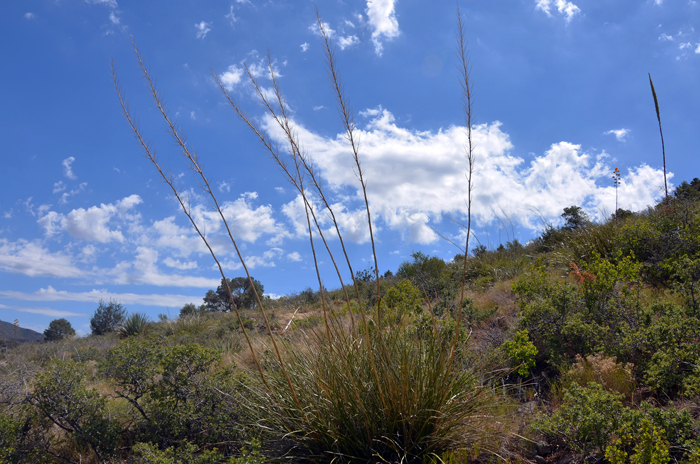
Scientific Name: Nolina microcarpa
Common Name: Beargrass
Also Called: Bear Grass, Sacahuista (Spanish: Palmilla, Sotol Chiquito, Sacahuista, Palmilla Para Techar Casas)
Family: Agavaceae, Agave or Century Plant Family (Reclassified to Asparagaceae)
Synonyms: ()
Status: Native
Duration: Perennial.
Size: Up to 6 feet more or less.
Growth Form: Shrub, subshrub; plants with Yucca-like growth; plants erect to spreading; acaulescent; large woody caudex; forms clumps up to 6½ feet in diameter; plant variation can be substantial.
Leaves: Green; grass-like, narrow linear leaves from a basal rosette, leaves to 3 or 4 long, about ¼ to ½ inch wide, fibrous, wiry, thick; margins mostly serrulate, .
Flower Color: White; flowers in dense open clusters; sepals and petals similar in size and shape and collectively known as (tepals); inflorescence paniculate; flowers dioecious; fruit a 3-sided capsule.
Flowering Season: May to June or later.
Elevation: 2,700 to 6,500 feet.
Habitat Preferences: Shallow, rocky hillsides, desert grasslands, oak and pinyon-pine woodlands, unfertile soils; exposed situations on mountain sides.
Recorded Range: Nolina microcarpa is found in the southwestern United States in AZ, NM, UT. In Arizona it is found almost throughout the state with few or no records in Greenlee, La Paz, Pinal and Yuma counties; in New Mexico it is found in the southwest and sporadic elsewhere and in Utah it is found in the southwest corner of the state in Washington County. It is also native to northwest Mexico.
North America & US County Distribution Map for Nolina microcarpa.
U.S. Weed Information: No information available.
Invasive/Noxious Weed Information: No information available.
Wetland Indicator: No information available.
Threatened/Endangered Information: In North America Nolina microcarpa is listed as "Salvage Restricted, Harvest Restricted"; by the state of Arizona.
In the Southwestern United States: Arizona and California each have 4 species of Nolina, Nevada and Utah each have 1 species, New Mexico has 3 species, Texas has 5 species. All data is approximate and subject to taxonomic changes.
Comments: Nolina microcarpa was used by southwestern American indigenous peoples for food, materials and beverages in the same manner as they used plants from the genus Agave and Yucca. Nolina microcarpa, as with Bigelow's Beargrass (Nolina bigelovii) is used in desert and upland landscaping as a focal species.
Vegetative growth of Nolina microcarpa is typically killed by fire, however this species grows back from the caudex following fire. Mule Deer and White-tailed Deer feed on Nolina microcarpa. Except in drought or when other forage is not available, livestock do not prefer this species as a forage plant. Flowers and seeds of this plant are poisonous to domestic sheep.
The type species for Nolina microcarpa is labeled as from "Rocky Canyon," southern Arizona (Rothrock 278).
Nolina microcarpa has been used for food, beverages and materials by southwestern American indigenous peoples.
Apache, Chiricahua & Mescalero Food, Unspecified; Stalks roasted, boiled or eaten raw.
Apache, Chiricahua & Mescalero Other, Containers; Moist grass laid onto hot stones to prevent steam from escaping.
Apache, Mescalero Other, Cooking Tools; Grass woven into trays and used for processing datil and mescal.
Apache, Western Other, Soap; Roots used as soap.
Havasupai Fiber, Mats, Rugs & Bedding; Leaves woven into a coarse mat and used for drying mescal.
Isleta Drug, Antirheumatic (Internal); Decoction of root taken for rheumatism.
Jemez Fiber, Basketry; Leaves used to make baskets for storage and washing of grains.
Keres, Western Fiber, Basketry; Plant used to make baskets.
Navajo Dye, Unspecified; Plant used to make a dye for blankets.
Papago Fiber, Basketry; Leaves dried, split and made into baskets.
Southwest Indians Fiber, Basketry; Made into baskets and used for storage containers.
Yavapai Fiber, Building Material; Leaves used to thatch dwellings.
See ethno-botanical uses at Native American Ethnobotany, University of Michigan, Dearborn.
